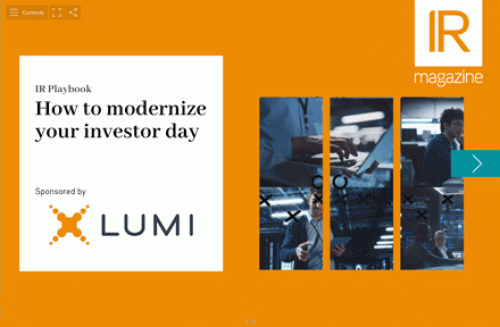The findings of the Middle East IR Practitioners Survey 2017, revealed at the Middle East Investor Relations Association (Meira) conference in Dubai last week, show that IROs in the region list meeting with investors as their top responsibility.
Ranked top at 92 percent, investor meetings are followed by quarterly/annual results then in third spot by participation in international conferences at 83 percent and liaison with existing shareholders in fourth at 81 percent.
The survey also reveals that, for most IR practitioners, language is not a barrier in the region, where 40 percent of IR professionals are non-Arabic speakers. Speaking Arabic also does not guarantee greater access to the board of directors.
When it comes to identifying key performance indicators for the IR function, 11 percent of surveyed participants either have not established any or do not have clear ones set. Among those who do, the most widely used metrics are meetings with buy-side and sell-side analysts (57 percent) and yearly investor event organized (56 percent), closely followed by the IR website/app (54 percent).
IR professionals are now well positioned in the region: 87 percent agree their roles are strategic, 73 percent feel valued by management and 60 percent feel valued by the board of directors, with more than three in four (78 percent) having at least some access to the board.
The region recognizes the importance of the IR function, too, with 83 percent of survey respondents having a dedicated IR department at their company. Most commonly, however, IR team numbers are low, with 61 percent of IR departments having only one or two members.
Middle East IR practitioners are 63 percent male and 37 percent female, and 59 percent have a graduate degree higher than a bachelor’s. Among all participants, 54 percent earn $100,000 or more but salaries for surveyed female practitioners tend to be lower than their male colleagues: while 63 percent of men earn more than $100,000 only 39 percent of women fall into that range.
Commenting on the survey, Felice Hurst, managing director for MENA at Hanson Search, says: ‘From an IR perspective compared with other market regions, the Middle East is still an emerging industry, but one that has made real progress over the last 10 years. Therefore the outlook for the IR profession in the region is really positive.’
Alex MacDonald Vitale, chairman of Meira, agrees: ‘A rapidly developing function, IR in MENA is adapting quickly to changing market needs and evolving regulatory demand. It is worth highlighting that the majority of companies surveyed plan to maintain or grow their teams over the next year, so the outlook appears positive for IR practitioners in the region.’
On some of the challenges exposed in the survey, MacDonald Vitale adds: ‘The need to align with global benchmarks, especially in the area of diversity and salaries, remains a challenge, but we are hopeful this will improve quickly as efforts to support parity continue.’
Survey participants work for companies in Egypt, Kuwait, Lebanon, Oman, Palestine, Qatar, Saudi Arabia and the United Arab Emirates.










